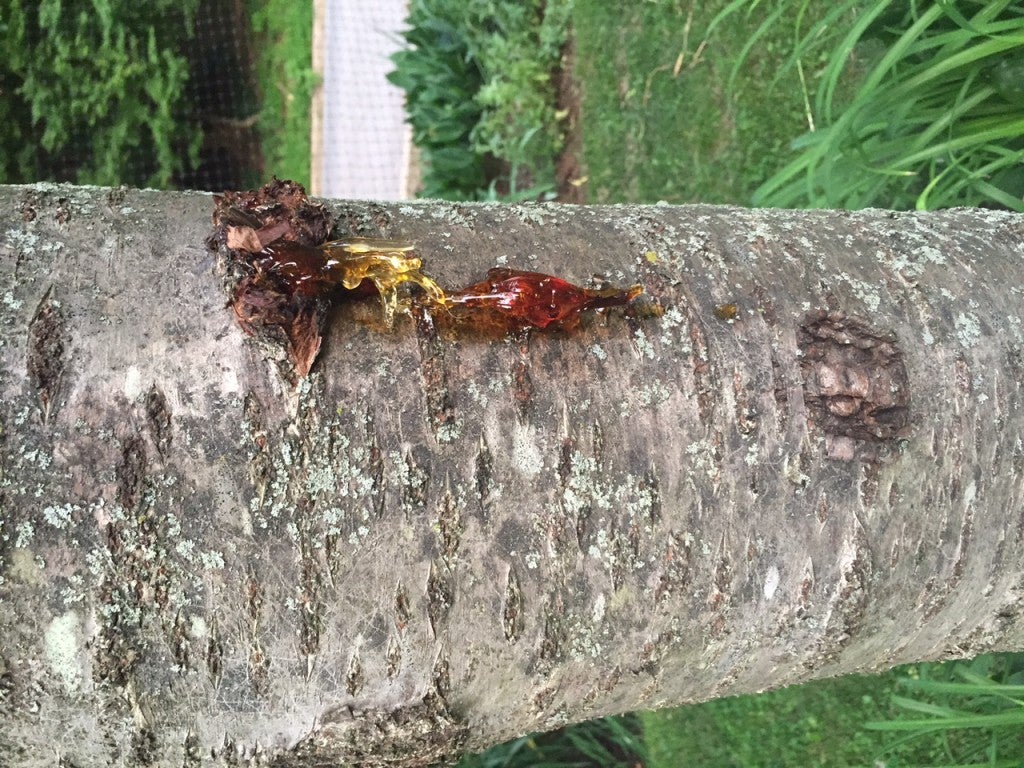Bacterial Canker Control – Tips On Treating Bacterial Canker On Cherries


Bacterial canker of cherry trees is a killer. When young sweet cherry trees die, the cause is more likely to be bacterial canker of cherry than any other disease in wet, cool areas like the Pacific Northwest. If you want more information about the latest methods of treating bacterial canker, read on.
Bacterial Canker of Cherry
What causes bacterial canker on cherry trees? Bacterial canker is a disease caused by the bacterium Pseudomonas syringae pv. syringae. If you see dark, sunken cankers on young fruit trees, your orchard may be infected. These are the first sign of bacterial canker on cherry trees. A careful inspection of the canker will help identify the disease. The inner tissue of the canker is orange. Brown streaks push up and down the branch into healthy tissue. Bud infections are also common, resulting in dead cherry blossom buds. The infected trees ooze gummy fluid, leaves droop, and entire limbs may be girdled by the cankers. Trees may die when the temperature rises. Infection with bacterial canker usually occurs on cherry trees younger than eight years old. The bacteria often enters via heading cuts, but can also take advantage of frost damaged tissue and insect injuries.
Treating Bacterial Canker on Cherry
Complete bacterial canker control remains a hope for the future. As of now, the best a gardener can do is manage bacterial canker on cherry. No product exists for treating bacterial canker or eliminating it. A good place to start managing the disease is selecting bacteria resistant cultivars. Some of the best resistant cultivars include Ranier, Regina, and Sandra Rose. Picking disease resistant rootstocks, like Colt, is another step in bacterial canker control. You are better off using an integrated approach to manage bacterial canker of cherry. The most important step is to prevent injuries that could allow bacteria to enter the tree trunk and branches. This includes both natural and manmade injuries. Here are a couple ways to prevent injuries:
- Paint tree trunks white to reduce winter injury.
- Only prune your sweet cherry trees in dry weather, like in summer, rather than during rainy spring or fall seasons. If that won’t work for you, prune in cool, dry periods in mid-winter. Heading cuts and leaf scars are particularly susceptible to infection.
It’s important in bacterial canker control to select a well-draining site for your cherry orchard. Plant cherry trees in well-drained soil and be sure to water and fertilize them appropriately. Stressed trees are more likely to infect than healthy ones. However, keep irrigation water off the tree’s canopy at least for the first year after transplanting.
Gardening tips, videos, info and more delivered right to your inbox!
Sign up for the Gardening Know How newsletter today and receive a free copy of our e-book "How to Grow Delicious Tomatoes".

Teo Spengler is a master gardener and a docent at the San Francisco Botanical Garden, where she hosts public tours. She has studied horticulture and written about nature, trees, plants, and gardening for more than two decades. Her extended family includes some 30 houseplants and hundreds of outdoor plants, including 250 trees, which are her main passion. Spengler currently splits her life between San Francisco and the French Basque Country, though she was raised in Alaska, giving her experience of gardening in a range of climates.
-
 Get Ready For A Summer Of Hummers! Grow These Full Sun Hummingbird Plants and Flowers
Get Ready For A Summer Of Hummers! Grow These Full Sun Hummingbird Plants and FlowersIf you’re lucky enough to enjoy a sunny backyard, make sure you are maxing out on your pollinator opportunities and grow these full sun hummingbird plants and flowers
By Tonya Barnett
-
 12 Lush Alternatives To A Lawn For Sustainable Spaces
12 Lush Alternatives To A Lawn For Sustainable SpacesAlternatives to a lawn are beautiful and also beneficial to your local ecosystem and its pollinators. Explore our top picks for plants to replace grass.
By Tonya Barnett